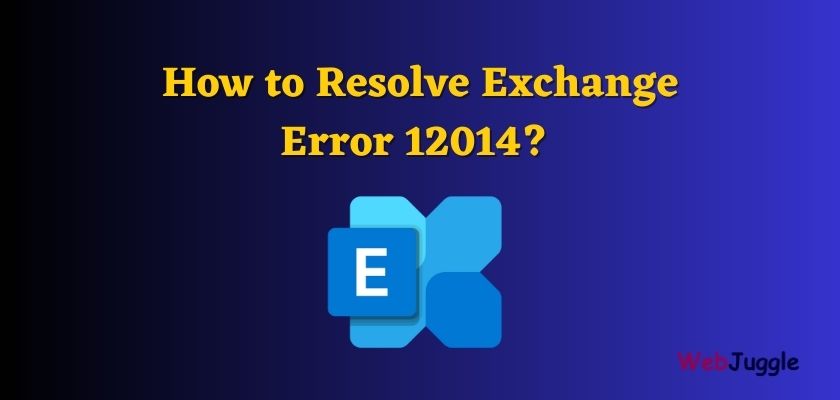Our very own Microsoft Exchange Server sure gives us a hand to store data and communicate over a network, but at some point, it tends to be prone to errors and corruptions as well. Exchange error 12014 is one of the common errors that is faced by users quite often.
Routinely, the Exchange Transport error 12014 is experienced when the connection between SMTP and TLS is made and the certificate is loading. How does this error occur? All possible reasons and tremendous solutions are going to be discussed in the further section.
Let’s move ahead!
Table of Contents
Source of Exchange Error ID 12014
There are a couple of reasons that influence the Exchange transport error 12014 to occur. The basic reasons are listed as followed:
- If the SMTP certificate has been disabled (accidentally).
- On the send/receive connector, if users have changed Fully Qualified Domain Name to match outside DNS code, the certificate error might occur.
- The security in Transport Layer needs an authorized certificate to be installed in the system’s Personal Certificate Store.
- One of the most common reasons of event id 12014 Exchange 2010 error is, if the user installs a custom certificate, and the modified certificate is having the same FQDN (Fully Qualified Domain Name), nevertheless, the certificate is not authorized for SMTP.
Methods to Fix the Event ID 12014 Exchange 2010 Error
Basically, the error is caused through the malfunctioning of “certificates”, whether it is a lost, mismatched or absent certificate. Anyway, let’s check out the remedies for this issue.
Technique1. Manual Steps
- You need to look for the available certificate with the help of “Get-ExchangeCertificate | FL*” PowerShell command. This command will return you the list of the available certificates.
- With the help of PowerShell command cmdlet, set the configuration on send and receive connector.
Here are the PowerShell Commands:
Get-SendConnector | FL name, fqdn, object class
Get-RecieveConnector | FL name, fqdn, object class
- Now check for the FQDN server if it is having CertificateDomains parameter.
Case1. If FQDN is containing CertificateDomains, then turn it on for SMTP service with this PowerShell command:
Enable-ExchangeCertificate -Thumbprint 2afd36617915932ad096c48eb3b847fc9564856 -Services “SMTP”
Case2. If FQDN does not have CertificateDomains in its list, then generate a new certificate using the following PowerShell command:
New-ExchangeCertificate -GenerateRequest-SubjectName “C=NL, O=Test, CN=mail.test.app” –IncludeAcceptedDomains –DomainName mail.test.app –Path c:\certificates\mail.test.app.req
- Finally, Restart your Exchange Server.
Special Tip: Although the above manual method is a sure troubleshoot to the Exchange error 12014, there might pop up a scenario where this manual method fails to work, may be due to severe corruption in the database of Exchange Server. In that case, we will need a reliable third party tool. Which tool is the best to fix the error, is discussed further.
Technique 2. Expert Solution
SysTools Exchange Recovery is one powerful service to deal with all kind of errors in Exchange Server’s database. The software is designed with the advanced algorithms to recover and repair the data and fix errors / corruption / malfunctioning in the Exchange mailboxes. Here are the functions of the best Exchange database recovery software:
- The software smoothly recovers deleted EDB files including emails, contacts, calendars, journals, tasks etc. Data items.
- Software is capable to repair both private (Private .edb) and public (Public .edb) folders data along with STM files.
- The tool is compatible with Exchange Server version 2016, 2013, 2010 and all the below versions.
- EDB Recovery software provides the advanced date filtering of the data.
- Also, you can recover your data from offline and dismounted EDB files.
Also read: Know How to Solve Exchange server is Unavailable error
Bottom Line
Dealing with issues like Exchange error 12014 in Exchange Server can be a real headache for any active user, if not fixed correctly. We get two best solutions to resolve this error. Manual method is generally good enough to fix this problem, however if the error 12014 still persists, we get the unbeaten solution Exchange Recovery for a permanent troubleshoot. Users may adopt any of the two methods to get rid of the malfunctions.


